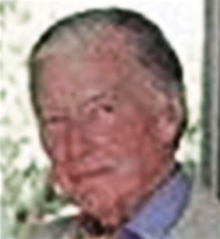
Henry Thomas Cadbury-Brown [commonly known as H.T. Cadbury-Brown or Jim Cadbury-Brown] was born in Sarratt, Hertfordshire, England on 20 May 1913 and studied at the Architectural Association School of Architecture in London from 1931 to 1935. He then worked briefly in the office of Erno Goldfinger in London in 1936-37. In 1937 he set up his own practice in London 1937, having won a competition to design British Railways Branch Offices.
After serving in the Army during World War Two, in 1945 he formed a partnership with John F. Metcalfe. In 1962 the practice became H.T. Cadbury Partnership. In 1951 Cadbury-Brown worked on projects for the Festival of Britain South Bank exhibition including the 'Origin of the People' pavilion and the main concourse and fountain display. He was assisted on these projects by the American architect Elizabeth (Betty) Romeyn Elwyn [also known as Elizabeth Dale] (1922-2002), whom he married in 1953. The pair subsequently worked closely together as architects. Her particular forte was the interior detailing of buildings.
In the late 1970s Cadbury-Brown worked on the redevelopment of West Chelsea for the Royal Borough of Kensington & Chelsea, during which time he was in group partnership with Eric Lyons Cunningham Partnership.
Cadbury-Brown taught at the Architectural Association in London from 1946 to 1949 and at the Royal College of Art in London from 1952 to 1961 and from 1975 to 1988 he was Professor of Architecture at the Royal Academy. He was also a visiting critic at the School of Architecture, Harvard University in 1956. He was a Fellow of the Royal Institute of British Architects (FRIBA), a member of the RIBA Committee International Union of Architects from 1951 to 1954 and President of the Architectural Association in 1959-60. He was also a member of the MARS. Modern Architectural Research Group. He was elected an an Associate of the Royal Academy (ARA) in 1971 and a Royal Academician (RA) in 1988. He lived for many years in Aldeburgh, Suffolk and died in Ipswich, Suffolk on 9 July 2009.
Architectural projects by H.T. Cadbury-Brown included a school and housing for Harlow New Town in Essex (1953-54); a new civic centre at Gravesend, halls of residence for Birmingham University, Ashmount School in London (1954-56); a 28-story office block in Moorgate, London (with Erno Goldfinger, 1955); Hornsey Lane School in London (1955); shops and housing in Basildon New Town in Essex (1960); the Royal College of Art in London (with Hugh Casson and Robert Goodden, 1960-63); lecture theatres at the University of Essex (with Betty Cadbury-Brown, 1966-67); the World's End complex in Chelsea, London (1977); and the new Print Room at the Royal Academy, Burlington House, London (1993).
Powers, Alan. Modern. The Modern Movement in Britain. London: Merrell, 2005
Powers, Alan. Modern. The Twentieth Century House in Britain from the Archives of Country Life. London: Aurum Press, 2004
Webb, Michael. Architecture in Britain Today. London: Country Life, 1969
Wheatley, Natalie. Cadbury-Brown: The Family Behind the Modernist Architect. [Place of publication not known]: Natalie Wheatley, 2011 [ISBN-10: 0954468031 ISBN-13: 978-0954468033]